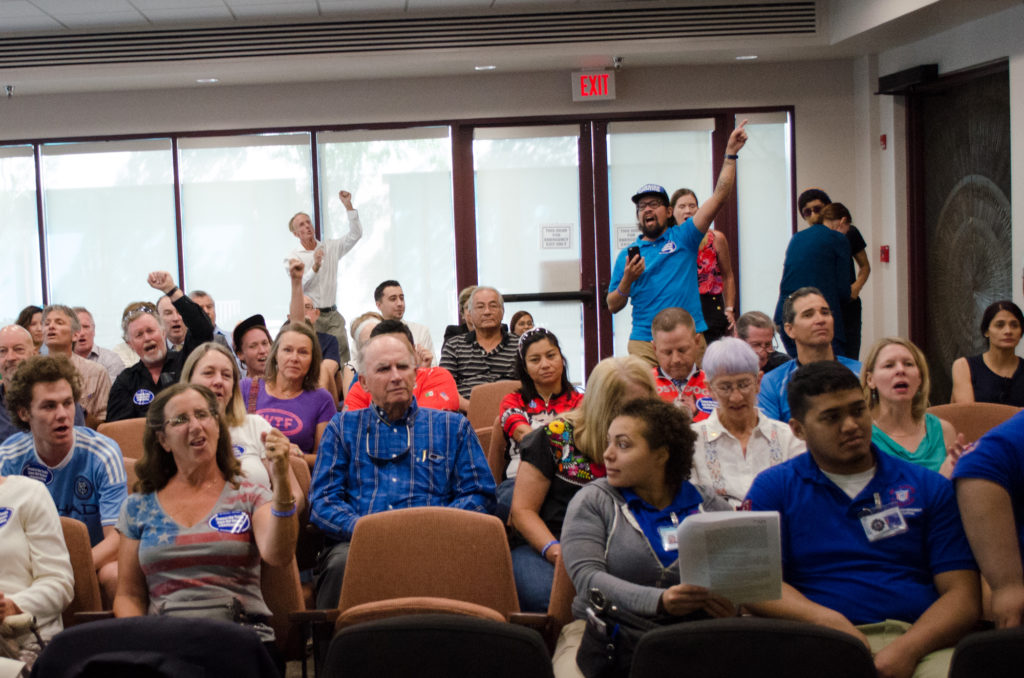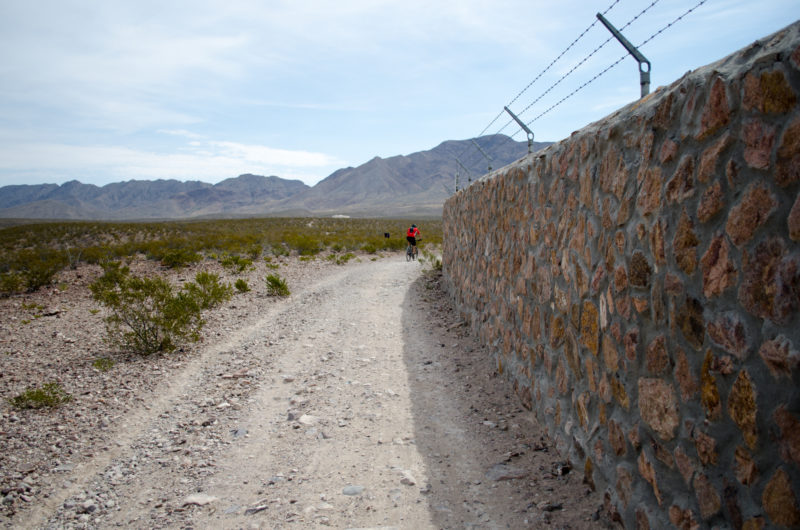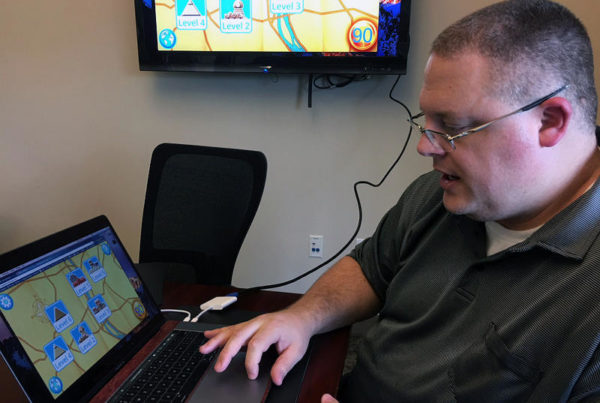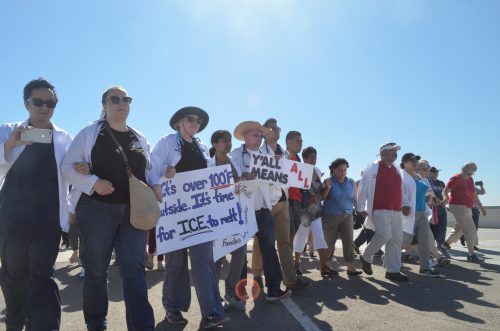With its location in the far west corner of Texas in the Chihuahua Desert, El Paso often doesn’t get the same attention as other major Texas cities. But the city of El Paso is trying to change that. It’s building new developments and arenas to attract more companies, tourists and young professionals.
Last month, the city council voted 5 to 3 to create a tax zone to develop part of a popular hiking and biking area next to Franklin Mountains State Park, but some worry this growth could threaten what makes El Paso unique.
Twice a month, Ruben Devereaux makes the four-and-a-half hour drive from Midland to El Paso. He comes to see his daughter, but he’s also an avid mountain biker and he says the city has some of the best trails.
“Second to my daughter,” he says, “this is what I look forward to coming to El Paso for.”
I meet him at the Lost Dog Trailhead. It’s the starting point for 14 miles of trails built by community members. Devereaux is getting ready to take a five-mile ride this morning. It’s one of his favorite spots.
“It has everything set up,” he says. “I mean if you forget your pump, you got a pump, if you forgot your tools you have tools and there’s parking spots. There’s even gas stations close if you need to get a Gatorade.”
But last month, the El Paso City Council voted to make the land in the northwest into a special tax zone in an effort to attract developers. The plan is to create more than 9,000 housing units with 800,000 square feet of commercial space, right in the mountains. It will alter the trail system—a lot. This has upset many hikers and bikers. Dozens showed up at the city council meeting to speak against it.

Community members chant in opposition to the city’s plan to develop a section of land adjacent to the Franklin mountains. The land contains the Lost Dog trail system.
Zach Gonzalez is a local runner. He’s organized several rallies against the plan. He says these trails are famous.
“They’ve been around for 25 years,” Gonzalez says. “People have been using them. They come from all parts of the nation not just El Paso. Professional mountain bikers, runners, hikers. They come to use it as a training ground because they’re really tough.”
Opponents also say the rugged desert terrain with its wide arroyos will just be too difficult to develop. But supporters of the plan say part of the trail system is on city-owned land, and right now, it’s considered vacant.
“So currently it is not producing any taxes for any of the school districts, the county, nor to the city of El Paso,” city representative Cassandra Hernandez says.
She voted for the plan. She says it addresses concerns from the community about preserving open spaces and trails.
“Not only does it insert and inject close to $50 million of funding for open space and trails and connectivity to trail,” she says. “That’s more than you see in any line item for the development and proposed cost for this development.”
Under the plan, one-fourth of the land will be preserved for the trail system, but that still means miles of trails could be removed and the trailhead would be relocated.
City representative Peter Svarzbein’s district includes this area. He voted against the plan. He thinks altering the trails could actually deter people from moving there.
“The city talks a lot about trying to attract quality of place and quality of life so we can attract an educated and mobile workforce that can choose to live anywhere,” Svarzbein says. “And the people that are using these trails, a lot of them are this workforce we’re claiming we want to attract.”
At the Lost Dog Trailhead on a recent Saturday, Susan Yebra is finishing a 40-minute hike with her one-year-old son Elliot. It’s her first time here.
“It was good for hiking with him because it’s pretty flat so there’s not a lot of hills, a lot of things to try to navigate around so it was easier for me to have 25 pounds on my back,” Yebra says.
Yebra has lived in the northwest area of El Paso for nearly a decade. She says she’s noticed a lot development and doesn’t like it.
“I’ve seen the city grow a lot, and at this point it’s kind of like too much,” she says. “I mean literally anywhere you go is orange. There’s construction on the highway or on the backroads or what have you.”
The plan for the Lost Dog Trails isn’t the only development proposal to kick up controversy recently. There’s an ongoing legal battle to stop the city’s plan to construct a multipurpose arena in the historic downtown Duranguito neighborhood. But City Representative Hernandez says all these projects are designed to attract more commercial property investment.
“You develop beautiful properties, retail properties to incentive and attract and recruit new companies to come here by providing that new atmosphere to appease to new demographics,” Hernandez says.
Hernandez says right now El Paso homeowners carry the burden for property taxes – a very high 70 percent. She says the city’s goal is to flip that burden to commercial properties.
The council will vote to finalize the details of the tax zone plan on June 26. Meanwhile, opponents have filed a petition that would require the plan be put before the voters in a general election.
















